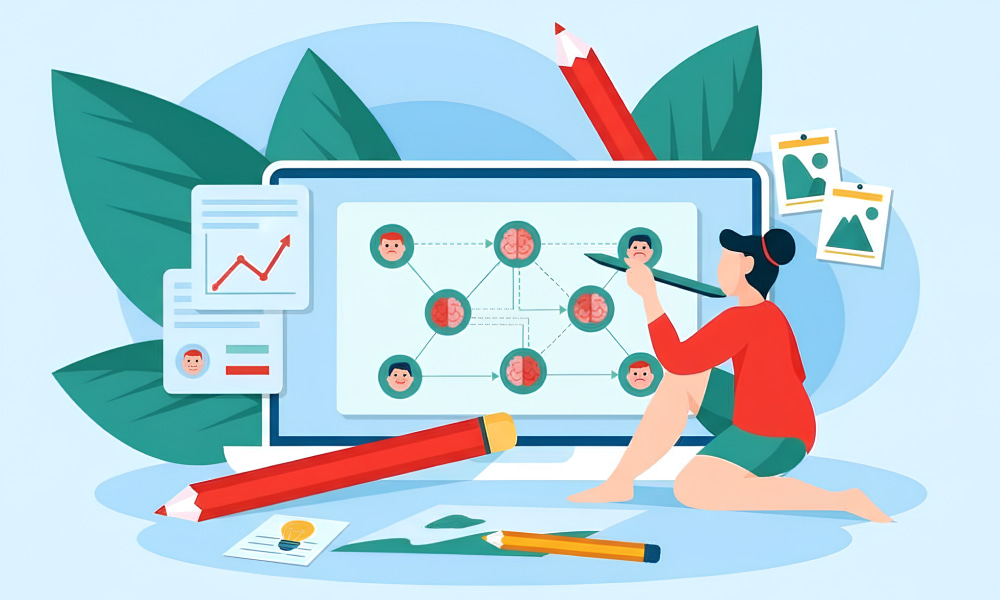Test Your EQ: an Online Emotional Intelligence Assessment
New Updates



Take EQ (Emotional Intelligence) Test
Start the TestBoost Your Relationships and Career With an Online EQ Test
Emotional intelligence captures how accurately you perceive feelings, regulate reactions, and convert empathy into effective action under pressure. Instead of focusing on personality labels, modern assessments look at adaptive behaviors: how you listen, how you de-escalate tension, how you motivate, and how you build trust. Leaders use this knowledge to reduce conflict, strengthen collaboration, and make clearer decisions when situations are ambiguous or fast moving. Individuals apply it to relationships, self-care, and resilient habits. Organizations rely on it to nurture cultures where feedback is welcomed and innovation takes root.
Beyond buzzwords, practitioners start by benchmarking current abilities so growth can be targeted and measurable. In many programs, teams establish a baseline using an EQ test that maps self-awareness, empathy, and social fluency into practical insights you can act on. When designed well, an EQ emotional intelligence test highlights patterns you might miss yourself, such as triggers that drain focus or blind spots that stall collaboration. For people who prefer hands-on learning, workshops often blend reflection with short simulations so you can rehearse responses before real stakes appear. If you want a fast pulse check before deeper development, you could even decide to test your EQ during a quiet week and then compare outcomes after practicing new habits for a month.
- Clarity: Understand what emotional signals mean and why they arise.
- Control: Choose responses that align with your values under pressure.
- Connection: Strengthen trust and rapport across diverse contexts.
- Change: Turn insight into repeatable behaviors that scale.

How Assessments Work, What They Measure, and How to Read the Scales
Most instruments combine scenario judgments with self-reflection to capture both instincts and intentions. Instead of trick questions, you’ll usually see realistic dilemmas where several answers look reasonable, forcing you to weigh empathy against boundaries. Coaches often complement data with conversations, since your environment, role, and goals shape which skills matter most right now. To boost reliability, good tools minimize bias, clarify terms, and present consistent scoring anchors across multiple domains such as emotional awareness, self-management, and relationship skills.
For structured development plans, organizations frequently select an EQ assessment test that aligns scoring with coaching milestones and role expectations. When precision across cognitive and affective domains is needed, some programs include an EQ intelligence test alongside observational feedback to cross‑validate patterns in behavior. Many leadership curricula trace their skill clusters back to research traditions popularized by the Goleman EQ test, translating theory into plain, coachable behaviors teams can practice together.
| Dimension | What It Evaluates | Why It Matters |
|---|---|---|
| Self‑Awareness | Recognizing emotions, triggers, and bodily cues in real time | Prevents impulsive choices and supports honest reflection |
| Self‑Management | Regulating reactions, sustaining focus, and recovering after stress | Stabilizes performance under deadline pressure |
| Empathy | Reading tone, context, and needs beneath the words | Builds trust and reduces costly miscommunications |
| Social Skills | Influence, collaboration, and conflict navigation | Elevates team outcomes and stakeholder buy‑in |
| Motivation | Purpose, perseverance, and constructive optimism | Drives progress and resilience through setbacks |
Interpreting scores works best when you translate numbers into habits you can rehearse. That means pinpointing a high‑leverage behavior, designing a small experiment, and observing results in a specific context, like weekly 1:1s or cross‑team standups. You’ll get more value by tracking a few behaviors consistently than by chasing every metric at once. Over time, patterns emerge that show which tactics move the needle fastest for you.
Career, Relationship, and Wellness Benefits You Can Measure
People often talk about “soft skills,” yet the outcomes are concrete: fewer communication breakdowns, smoother handoffs, and stronger customer retention. When you adopt evidence‑based tactics, you’ll notice meetings become shorter because alignment happens sooner. Feedback gets easier to give and receive, political friction cools down, and prioritization sharpens. Hiring managers love it because teams with high emotional fluency adapt quickly and handle ambiguity without drama. To track progress objectively, teams review their EQ test results alongside business indicators such as cycle time or client satisfaction. For learners on a budget, curated directories help you compare the best free EQ tests by length, validity notes, and the kind of coaching guidance included. If you enjoy lightweight practice between coaching sessions, you might experiment with a short reflection built around a test your emotional intelligence free EQ quiz, and then pair your insights with a weekly conversation focused on one behavior at a time.
- Leadership: Clearer priorities, calmer decision cycles, and crisp delegation.
- Collaboration: Faster consensus and better conflict prevention.
- Customer work: Deeper listening that uncovers hidden needs.
- Wellbeing: Less rumination, steadier energy, and more restorative recovery.
Taking an EQ Test Online: Preparation, Process, and Pro Tips
Digital tools make it simple to evaluate skills from anywhere, but how you prepare will affect accuracy. Plan to take the instrument when you’re rested, not after a long day or an emotional argument. Read each prompt twice and answer based on typical behavior, not an idealized version of yourself. If a question feels ambiguous, imagine a recent situation that fits the scenario and choose the option you actually used. When possible, take notes about moments that felt uncertain so you can discuss them later with a mentor or coach. Remote platforms are convenient, and many professionals prefer the flexibility of an EQ test online that fits into a lunch break or a quiet morning. If you’re exploring options before committing to coaching, you could start with an EQ free online test to get directional feedback and then refine your plan with targeted practice. For distributed teams, an online EQ test can be paired with a short debrief to align on shared norms, such as how to signal overload or how to request clarification without friction.
- Choose a calm environment with stable internet and no notifications.
- Answer quickly but honestly to capture gut‑level tendencies.
- Schedule a debrief within 48 hours while memories are fresh.
- Translate one insight into a practice you will repeat this week.

From Scores to Skills: Turning Insight Into Lasting Behavior Change
Numbers don’t improve relationships, habits do. The fastest progress comes from narrowing scope: pick one behavior, one context, and one metric to watch, then iterate. For example, if interruptions escalate tension in project meetings, practice a simple pause‑and‑summarize technique before responding, and track how often discussions stay on topic. Small, repeatable wins build momentum, and mentors can help you troubleshoot when a tactic doesn’t land as expected. Reflection journals and peer feedback loops make the learning stick.
Budget‑friendly learners often kickstart their journey with a free EQ test and then upgrade to coaching once they know where to focus. If you already sampled a screening tool, you might deepen your approach by revisiting a platform that offers an EQ test free tier for retesting, which helps you gauge whether new routines are transferring into daily interactions. Over a quarter or two, you’ll likely see clearer communication patterns, shorter recovery time after stress, and fewer misunderstandings during high‑stakes moments.
- Set a cadence: weekly practice, monthly review, quarterly retest.
- Make it social: share goals with a teammate to build accountability.
- Design triggers: pair behaviors with cues like calendar prompts.
- Reward progress: celebrate consistency more than perfection.
Take EQ (Emotional Intelligence) Test
Start the TestFrequently Asked Questions
-
How long does a typical assessment take?
Most instruments require 10–30 minutes, depending on depth and the number of scenarios included. Plan buffer time for a short reflection so you can capture insights while they’re fresh and organize questions for a coach or manager.
-
How accurate are these tools for workplace development?
Validity varies by instrument, which is why context and debriefing matter. Pair the data with real examples from your role, and use trend comparisons across time rather than fixating on a single score.
-
Can I take one at home without specialized software?
Many providers offer browser‑based options you can use on a laptop or tablet, and some include mobile experiences. If convenience is a priority, you’ll appreciate platforms that provide an EQ test online for free pathway alongside premium reporting.
-
What should I do after I complete an assessment?
Translate one insight into a simple behavior you can practice this week, and schedule a debrief. Track outcomes in situations where the skill matters most, such as 1:1s, client calls, or sprint reviews.
-
Will my employer see my individual answers?
Policies differ, so check the privacy statement and ask your HR or learning partner. Many organizations aggregate results and share summaries, while detailed responses remain confidential.
 EQ Assessment Test: A Guide to Measuring and Elevating Emotional Intelligence
EQ Assessment Test: A Guide to Measuring and Elevating Emotional Intelligence